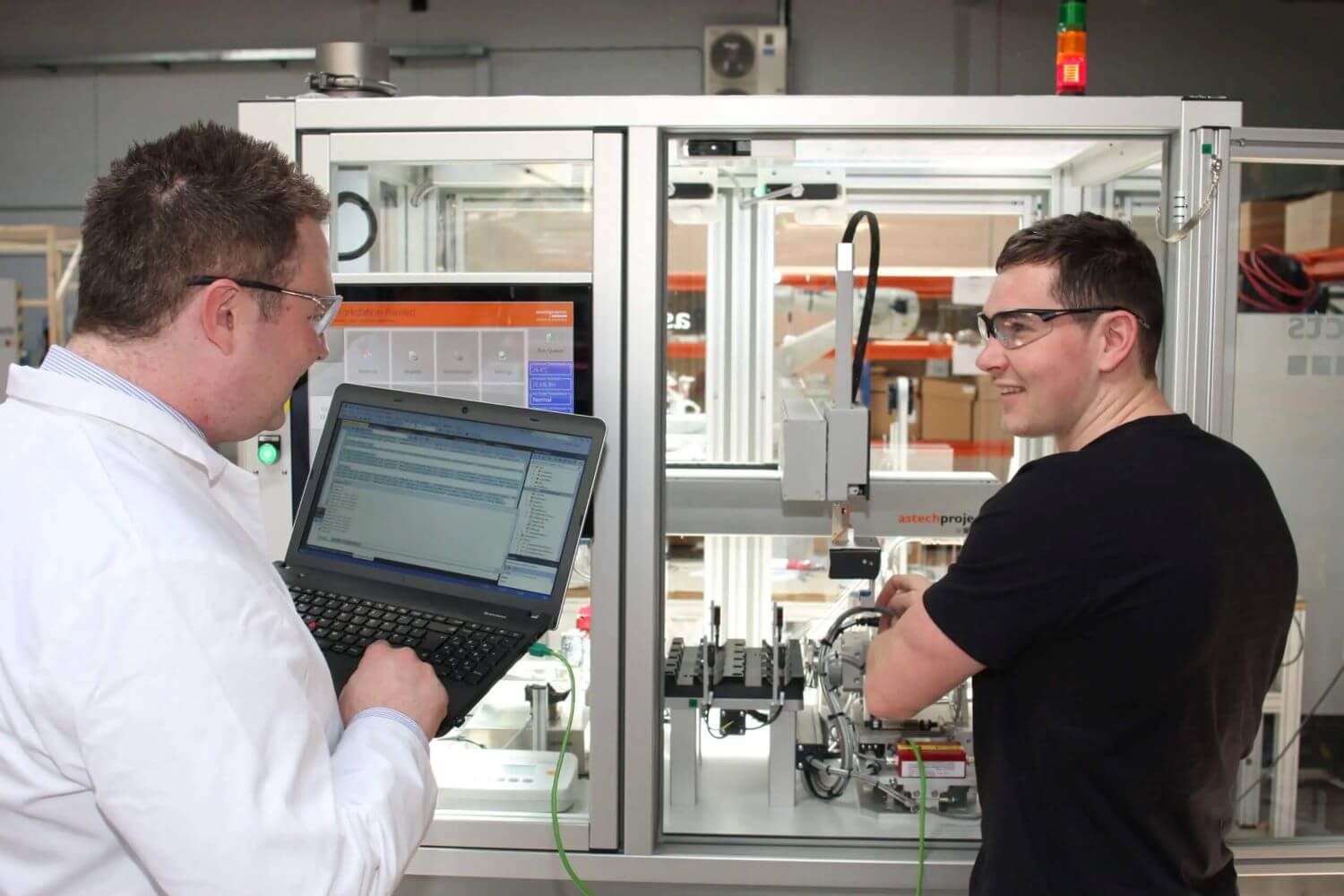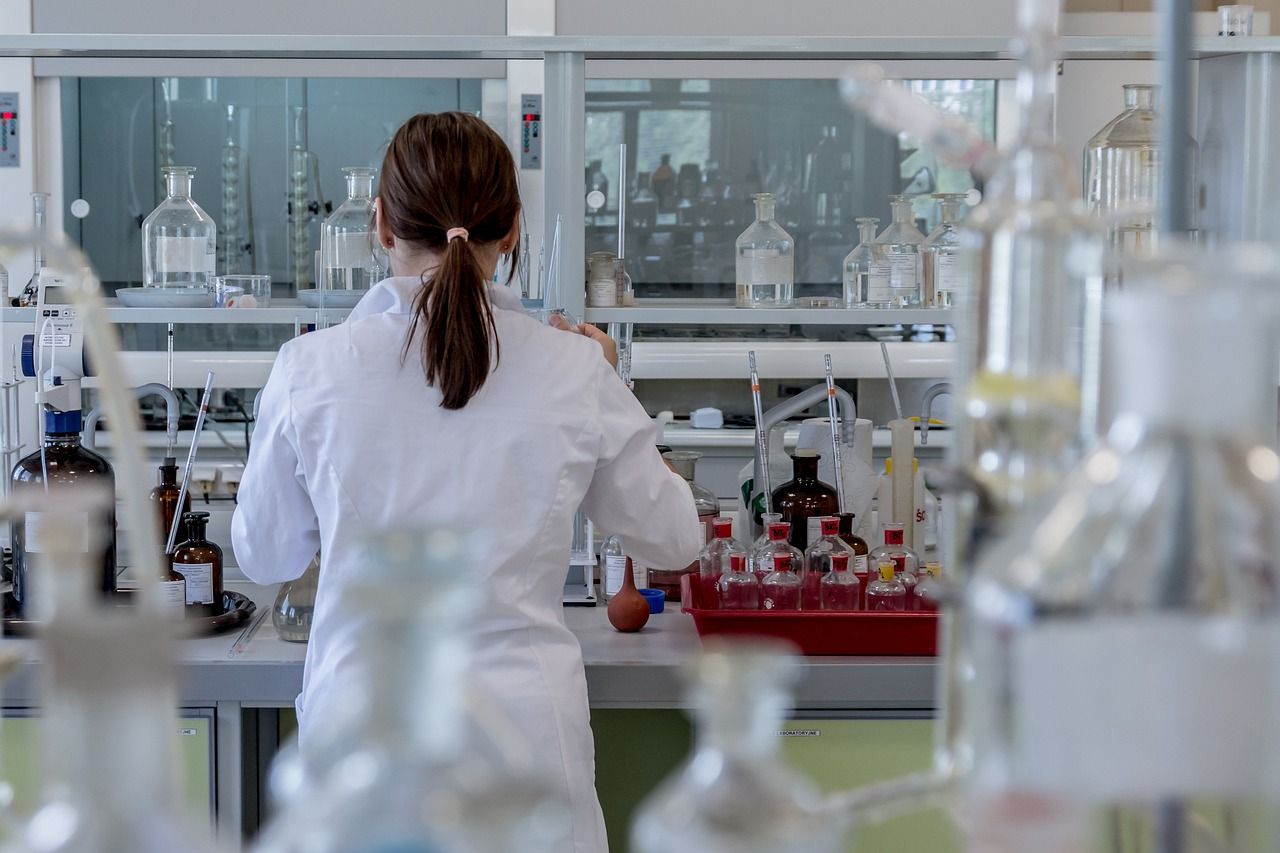How human robot collaboration is achieved with cobots

Share this article
Since the first industrial robot was unveiled to the world during a Chicago trade show in 1961 by George Devol, humans have been racing to invent, develop, and finesse robotic technology.
The Unimate 1900 model was a patented robotic arm weighing 4000 pounds, and its sole purpose was to transport and weld die castings onto auto bodies in the General Motors production line.
Since this first revolutionary step into industrial robotics was achieved, inventors and engineers at companies like Astech have developed machines which not only function autonomously, but can work seamlessly and safely alongside workers in laboratory, manufacturing, and industry spaces.
In the decades since Devol’s robotic arm was paraded across the world stage, the exciting idea of human robot collaboration has remained at the forefront of industry.
Below, we’ll be talking about how collaborative robots (also known as cobots) are helping businesses around the globe achieve their goals of human robot collaboration, and the benefits of striking a balance between human expertise and machine functionality.
Discover the possibilities of Astech’s RAMP / Cobots.
Cobots bridge the gap between humans and robots
Unsure what cobots are, how they differ from robots, and how they made collaboration possible? Here’s how cobots differ from robots, alongside the perks of all three types of worker.
Robots
• Consistent and constant speeds
• Can generally only be used for one task
• Able to work in dangerous conditions
• Reliable
Cobots
• Programmed for a range of speeds and motions
• Lower cost, and can be utilised across a range of tasks
• Also able to work in dangerous conditions, but safer for humans to operate around
• Flexible
Humans
• Can conduct stop-start, complex tasks
• Multi-talented, can be trained to develop a number of skills
• Thinks critically to spot and avoid upcoming hazards
• Trustworthy
Renowned for their flexibility, they can be deployed across many industries to complete a range of tasks from loading and unloading, quality control, dispensing, welding, and more. Industries we’ve delivered collaborative robots for include:
- Manufacturing
- Pharmaceuticals
- Medical Devices
- Laboratories
Here’s a video of one of our Cobots assembly cells at work
Working alongside cobots delivers tangible benefits to workers
Cobots take robotics a step further. Imagine a machine that, when equipped with the right tools, is capable of completing tasks like lifting, handling fragile items, painting, welding, and assembling.
Now imagine that machine can operate within the same space as workers, with a simple, interactive interface and no barriers needed.
1) Smaller footprints, more room to work in
Cobots take up less space than traditional robots, which often need more floor space and barriers to keep lab workers safe from moving parts. Most cobots are programmed to stop what they are doing if they are touched or something gets in their path, removing the need for a dedicated ‘no worker’ zone.
2) Safer environments = greater confidence
As mentioned, cobots are designed with safety in mind. Most have intuitive braking systems, and even if they do collide with a human, it’s unlikely to be with enough force to cause any harm. This is in contrast with industrial robots, which aren’t traditionally constructed to detect humans in their path.
Cobots have speed limits, force limits, and sensors in place as well as being designed to limit the risk of anything getting trapped in their joints. By conducting a thorough risk assessment with your cobot, you can ensure most dangers are eliminated.
3) Improved worker satisfaction and productivity
Taking away the difficult, physically demanding, and boring tasks can significantly improve the happiness of employees. By introducing a cobot, you are essentially adding another pair of very efficient hands to your workflow that your workers can rely on whilst they focus on tasks which are more complex.
4) Workers can decide where the cobot is best used
Cobots can be programmed through software like LabExpert® to take on different tasks. Whether a workforce identifies that they need their cobot working on a specific task all week, or they need help with something different every day, a cobot can fill that labour gap.
In short, humans and cobots have complementary skill sets that can only be improved by working closely together. Cobots provide physical help to get tasks done in a timely manner, whilst human workers have the insight needed for more complex jobs.
Integrate cobots into your workforce
At Astech, we’re believers in human-centric design, and all of our collaborative robots are developed with this in mind.
With the rise of AI and automated tech, workers across all industries have been harbouring fears that robots will take over their jobs. This is a fear that can be eliminated as you introduce cobots into your company by emphasising the strengths of both parties.


